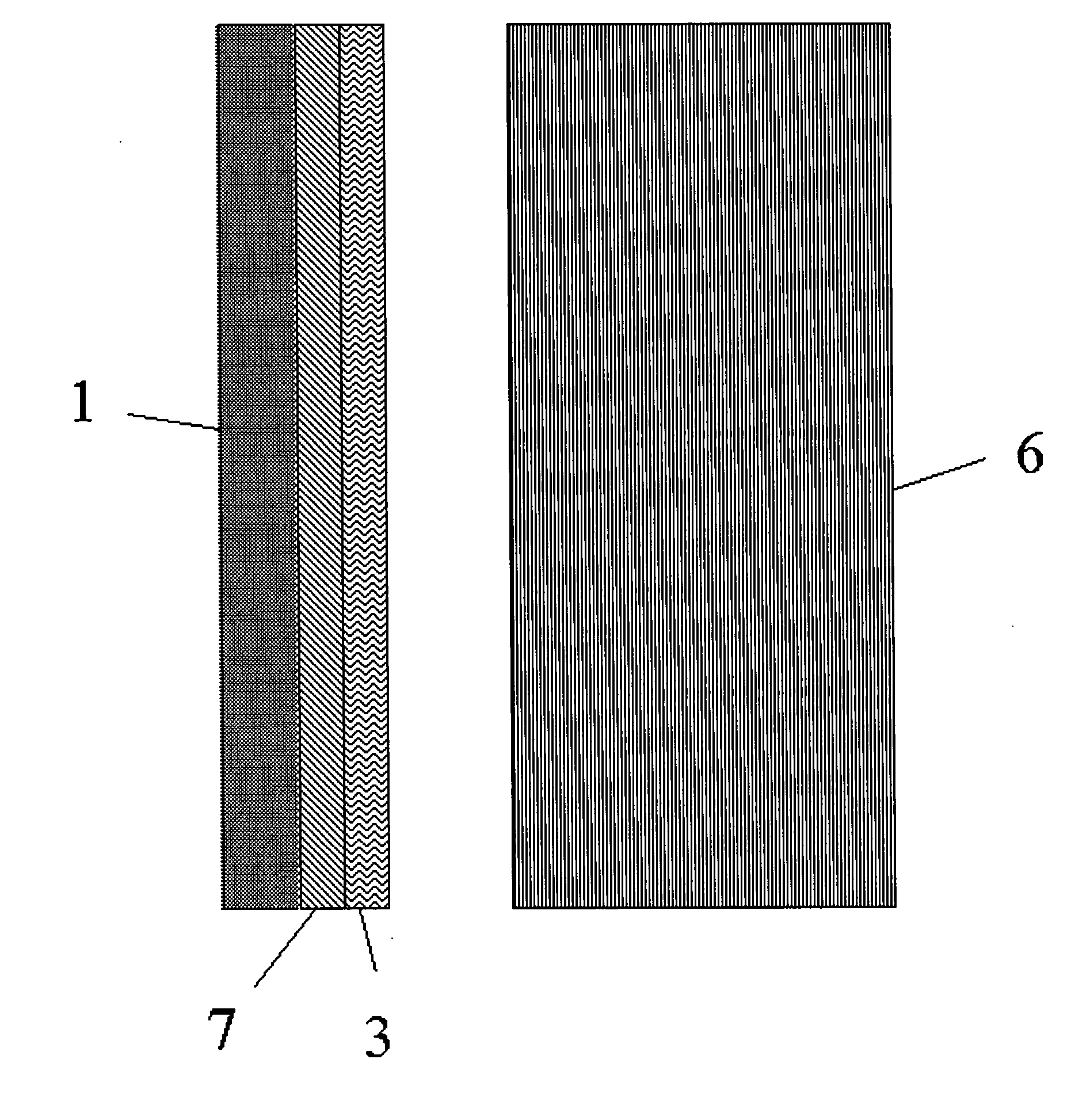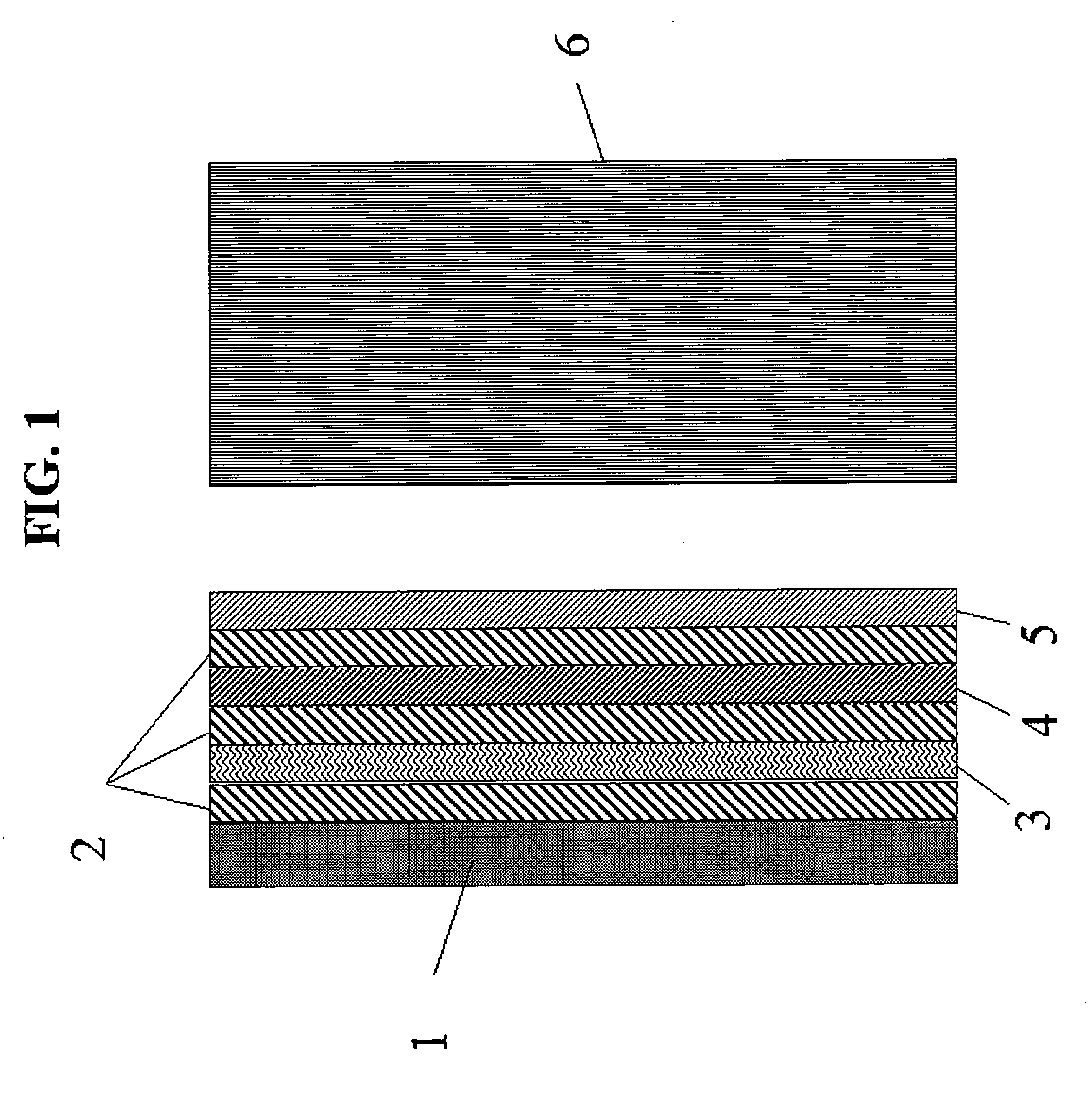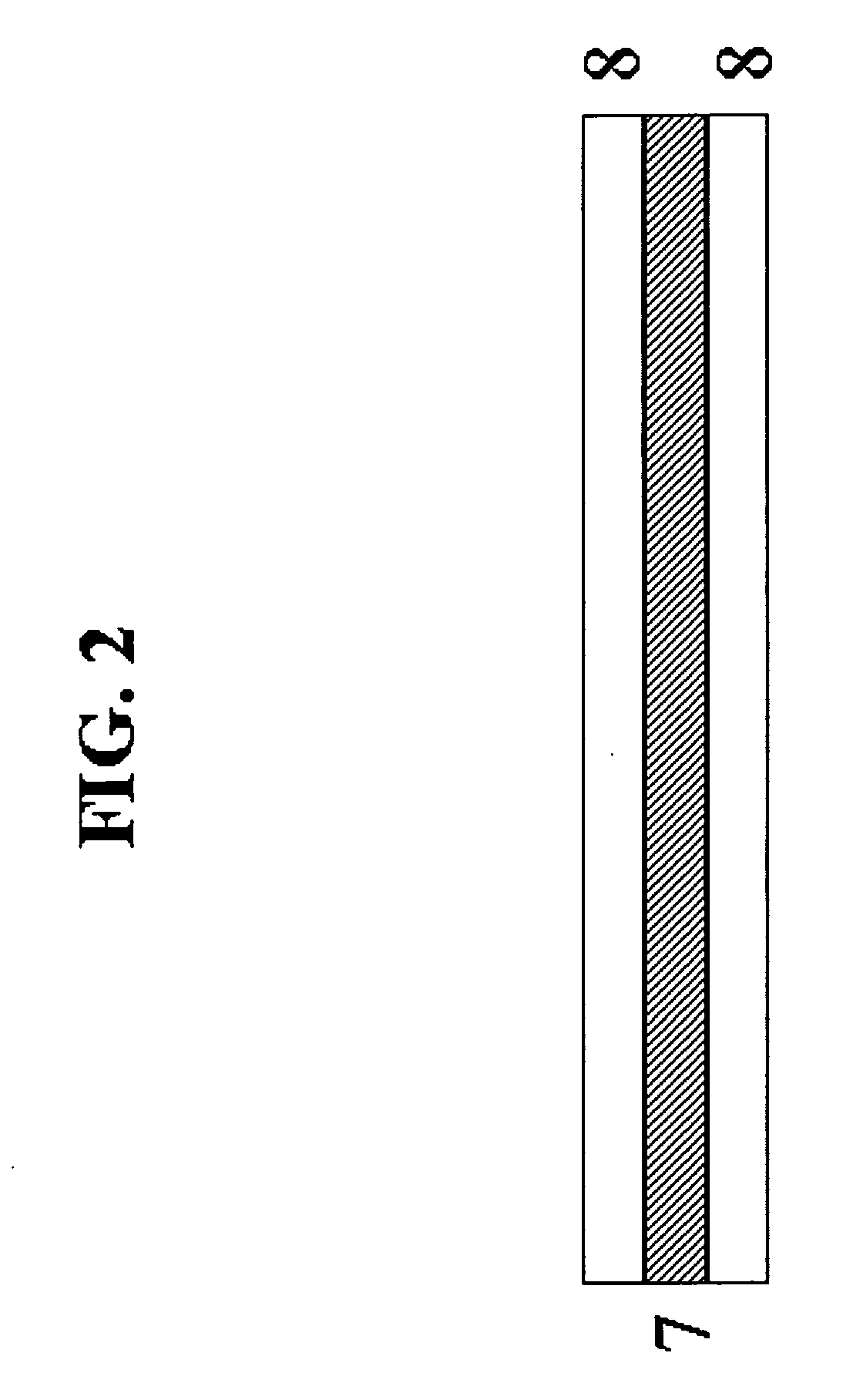Orange and NIR-absorbing optical adhesives for plasma displays
a technology applied in the field of orange and nir (near infrared) absorbing optical adhesives, can solve the problems of dye instability, poor durability at elevated temperatures, dye stability at elevated temperatures, etc., and achieve the effect of improving the performance and manufacturability of optical filters
- Summary
- Abstract
- Description
- Claims
- Application Information
AI Technical Summary
Benefits of technology
Problems solved by technology
Method used
Image
Examples
Embodiment Construction
[0037] Turning now descriptively to the drawings, in which similar reference characters denote similar elements throughout the several views, the attached figures illustrate a orange and NIR-absorbing optical adhesive for plasma displays, which comprises a tinted optical adhesive for use in fabricating optical elements, including optical filters as used in plasma displays. A typical layer structure of the optical filter, sometimes referred to as a “front filter”, and the plasma display is shown in FIG. 1.
[0038] The optical filter in the present invention is simpler in that fewer layers are needed because the color correcting dyes (or pigments) are contained in the laminating adhesive(s). The present invention includes an optical adhesive containing a light-absorbing dye. The adhesive is commonly a pressure-sensitive adhesive (PSA) based on neutral pH chemistry, and may be acrylate-based chemistry. Typically, an optical PSA is provided in roll or sheet form between two release films...
PUM
 Login to View More
Login to View More Abstract
Description
Claims
Application Information
 Login to View More
Login to View More - R&D
- Intellectual Property
- Life Sciences
- Materials
- Tech Scout
- Unparalleled Data Quality
- Higher Quality Content
- 60% Fewer Hallucinations
Browse by: Latest US Patents, China's latest patents, Technical Efficacy Thesaurus, Application Domain, Technology Topic, Popular Technical Reports.
© 2025 PatSnap. All rights reserved.Legal|Privacy policy|Modern Slavery Act Transparency Statement|Sitemap|About US| Contact US: help@patsnap.com



